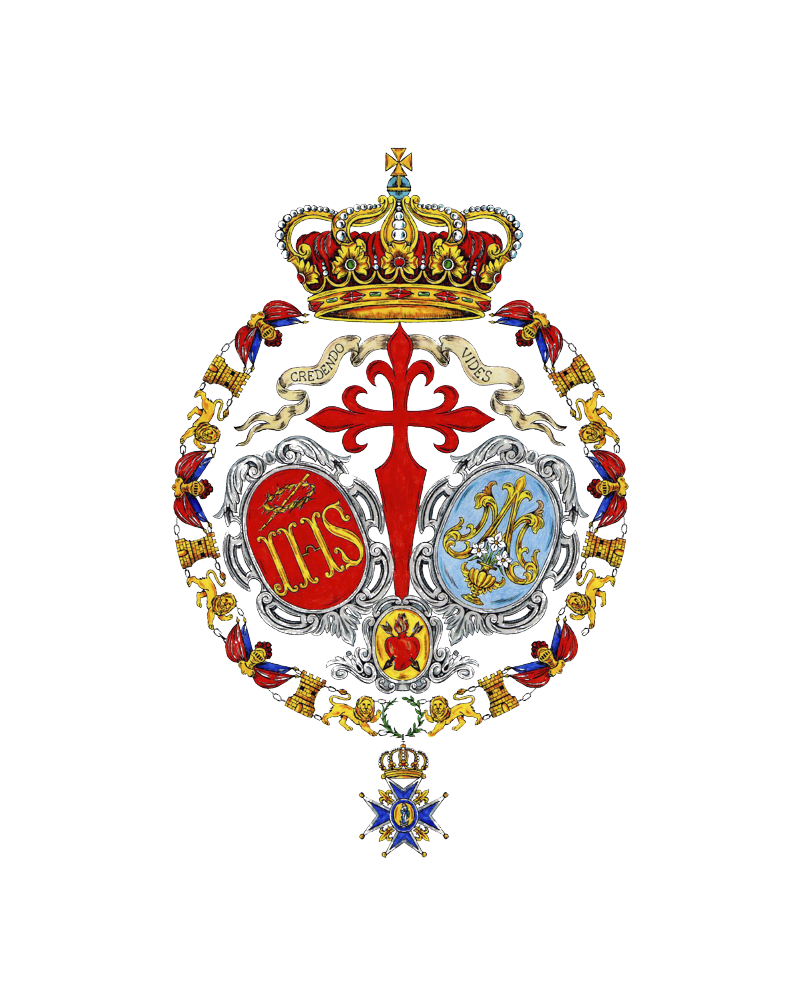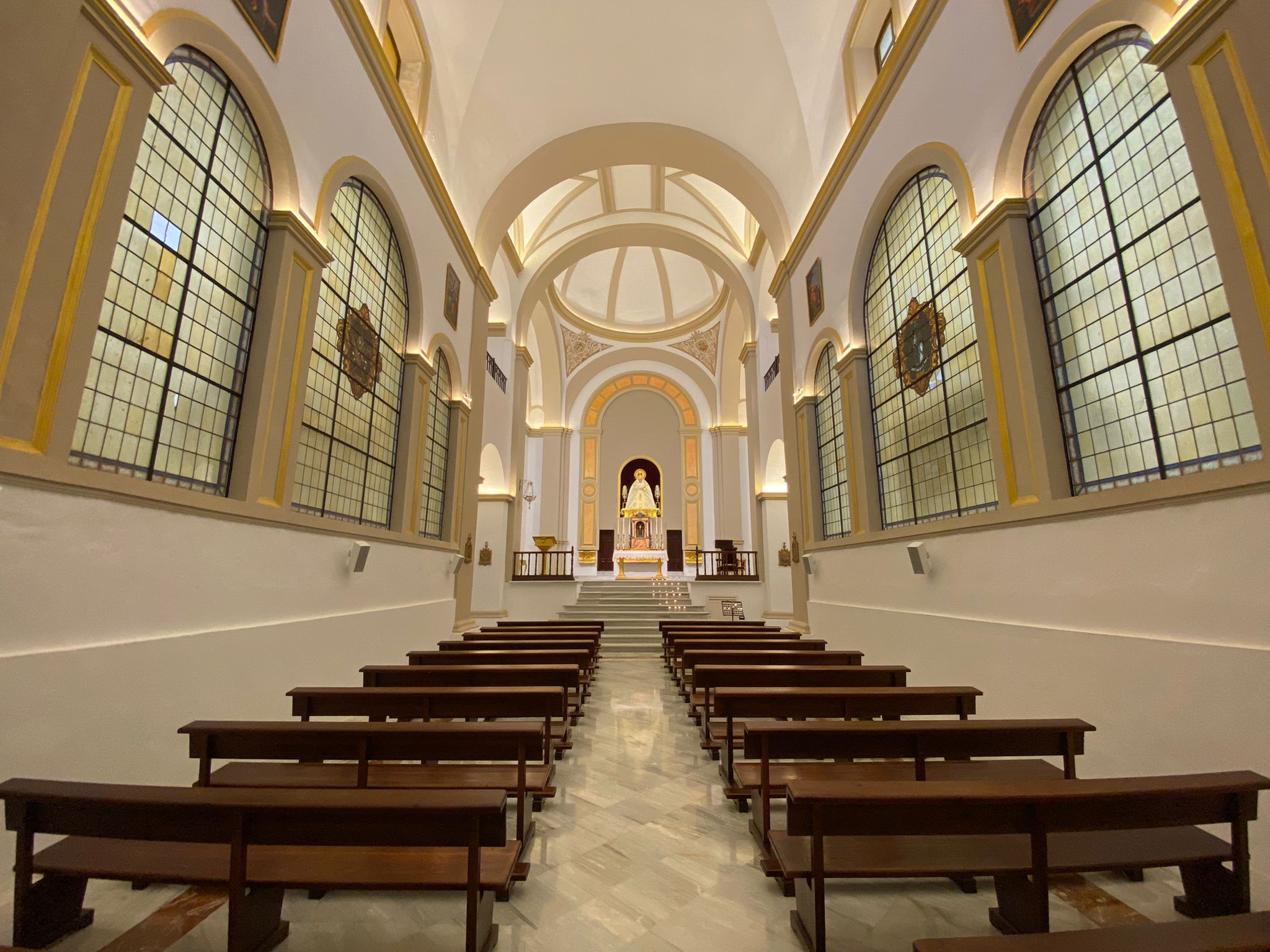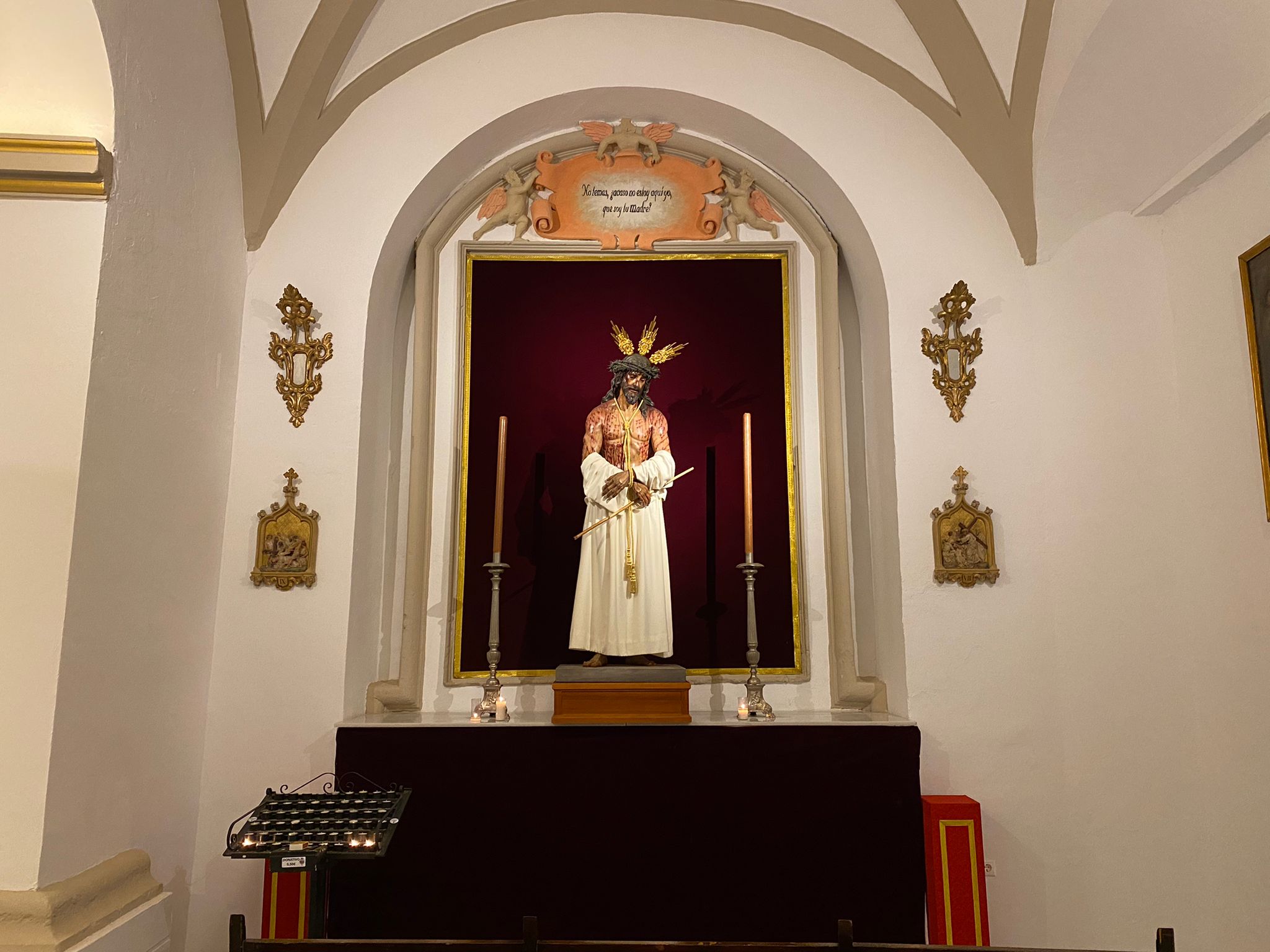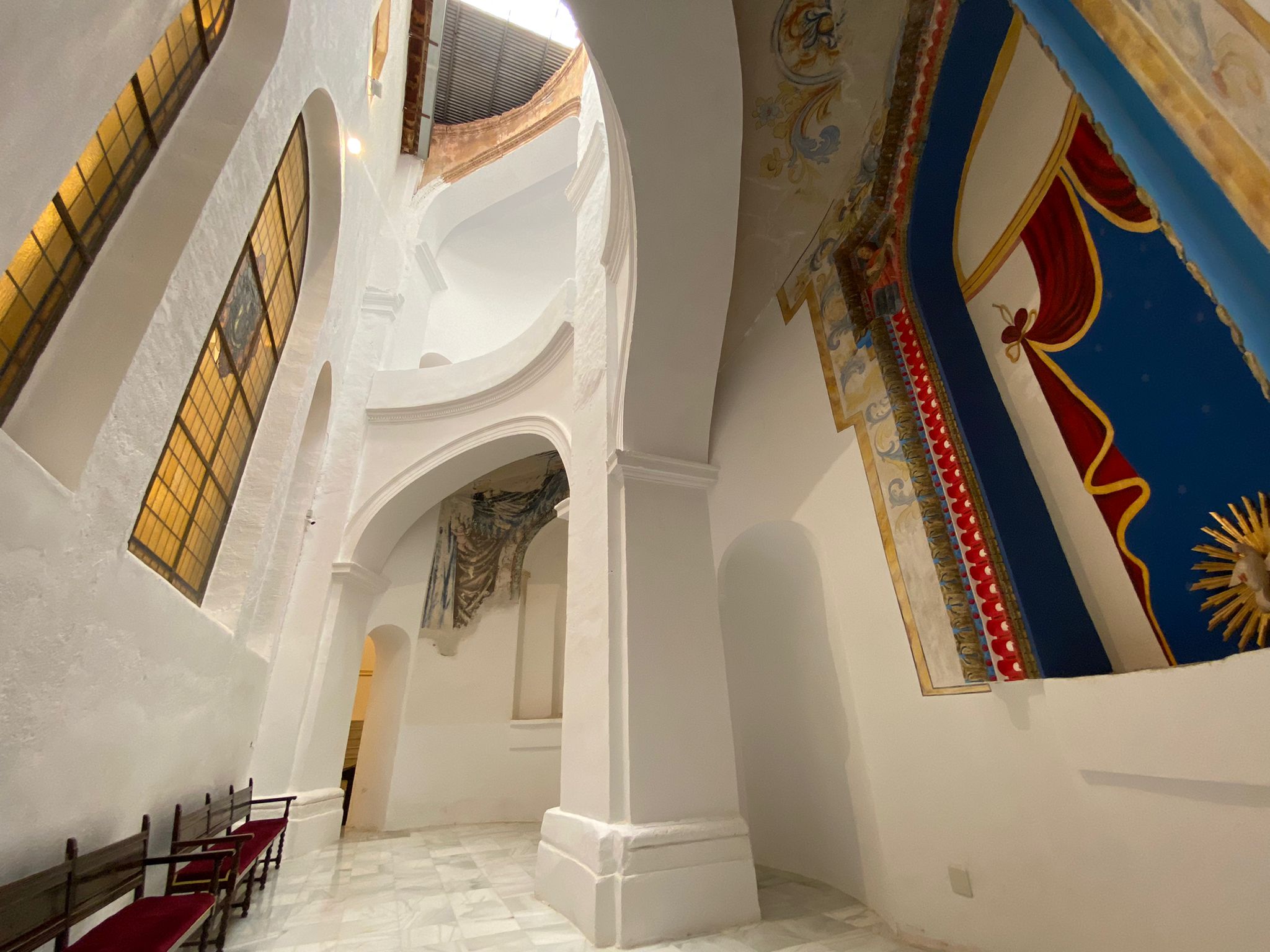The altar or altar from the Latin meaning elevated is the area where we find ourselves, being the most spiritual place in the temple since we are before the true, real and substantial presence of Christ in the tabernacle in the same way that we contemplate the main altarpiece that presides over his dressing room the devout image of Maria Santísima de las Lágrimas around which this brotherhood was founded in 1955, due to the pious wishes of the parishioners of the Santiago Apóstol Parish of this city. The image of the Tears of great devotion for the people of Guadix, is a work of the famous Sevillian sculptor Don Antonio Castillo Lastrucci made in 1952. And depending on the liturgical time in which we are, it can be found dressed with a style and colors characteristic of the liturgy. We show you the different types of clothing in the attached documents.
The Brotherhood of María Santísima de las Lágrimas has as its main goals: the promotion of public worship in which it performs a station of penance on the evening of Holy Thursday with a large number of penitents and women dressed in mantillas that accompany the Palio, the which is made in sterling silver jewelry, in which the tailed chandeliers stand out, which are made up of large pelicans that represent altruism led to the sacrifice of himself, a symbol of the death of Christ, since the bird opens its own chest to feed the little ones, the neo-baroque vent presided over by nine chapels, Virgen de las Angustias (Patron Saint of Guadix), San Torcuato Patron Saint of Guadix, Santiago, Santa Clara, San Miguel, San Pedro Poveda, San Antonio , San Jose, and San Juan de Dios, the work of the Sevillian Villarreal goldsmith, embroidered in fine gold and silk like the saya, touches on the mantle and canopy, the latter work of the Granada workshops of Don JoseManue lMartinez Hurtado, to point out the imperial crown made of gold, silver, ivory and precious stones, with scenes embossed in display of jewelry of the Virgin Mary or the painful mysteries that are present in each star that finishes it off, the piece is presided over by God the Father, Son and Holy Spirit where grenades are intertwined as a symbol of the union and catholicity of the Church, another element of great artistic quality in the pictorial plane is the medallion or glory work of the famous Granada painter Don Juan Diaz losada who presides over the canopy ceiling with the image of the most pure conception inspired by the portico of the convent of the Poor Clares of Guadix, closely linked to the history of the brotherhood, many other works of great artistic quality as a theological foundation can be discovered, which have been financed by their devotees over the years. We recommend watching the attached video and the highlights of his trousseau
Another of its purposes that is provided in the rules of the corporation is to promote the spiritual life of its brothers as well as of the faithful through an evangelizing mission, offering a testimony of faith and Christian charity, duly participating in the pastoral mission of the Church through its Communion with the Bishop and practice of charity with those most in need.
An architectural element to highlight was discovered during the excavations that the brotherhood carried out in the central nave to return the building to its original state and it is a large burial crypt or masuleus that is located under the altar, where around a large column the Augustinian monks lay. (See photos of the item).
Then after passing through the Niche of Our Lady of Guadalupe, patron saint of Mexico, empress of the Americas and possibly the Marian icon that is most venerated worldwide. We will enter again the opposite lateral chapels with their original architecture and frescoes to meet the Child God of Divine Mercy, a Mannerist jewel in addition to the musical elements that are part of the story, with its patron Saint Cecilia.








